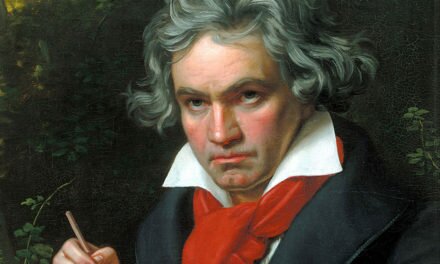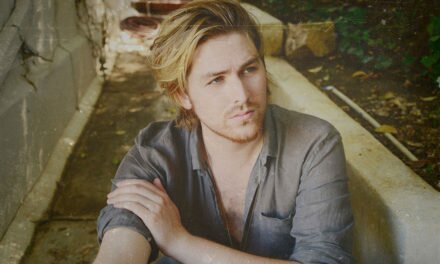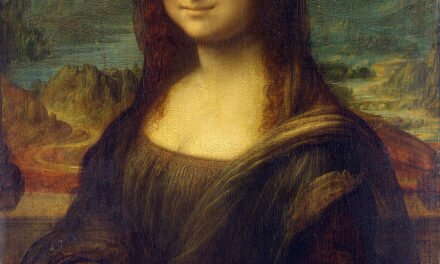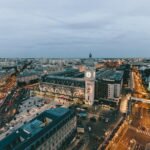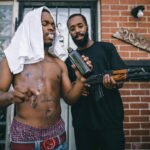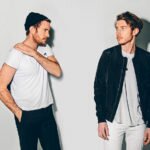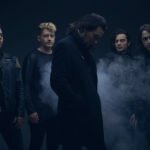If you’re one to keep your finger on the pulse of pop culture, there’s a good chance you’ve seen Stephen Bliss’ work before.
Stephen enjoyed a 15-year stint as Senior Artist at Rockstar Games, where he created some of the entertainment world’s most iconic imagery for the wildly popular Grand Theft Auto series, strewn across the Internet and millions of household screens, posters and billboards across the world.
Beginning his career thirty years ago as a designer for Japanese fashion label Hysteric Glamour, Stephen has since brought his heavy-hitting style of work to brands like MTV, Nintendo, Pepsi and GQ.
Stephen left Rockstar Games earlier in the year to rediscover his roots as a commercial and fine artist. Recently, he launched a solo show at Monorex gallery in Los Angeles. The exhibit, appropriately titled “I, Frankenstein”, showcases the “beauty of decay” through a collection of battered street posters brought back to life with Stephen’s unique brand of art.
We caught up with Stephen and talked to him about creativity, “Frankensteining art” and having a hand in the world’s most popular video game franchise.
Tell us a bit about yourself, Stephen.
I’m a Dad, an artist,I’ve been in the art/illustration/design/comic business for over 30 years, I played guitar in various punk bands, I dislike Tinder except when I get a match, I like PG Tips tea, I sing Smiths songs at karaoke and I once lived in a cupboard in Japan (for a short time, until they found me). There’s more…
I’m British but I’ve lived in NYC for 16 years now and I’m currently residing in Sesame Street-esque Brooklyn.
I worked at Rockstar Games as Senior Artist from 2001 and left this year to pursue a career in fine art.
I eat a lot of Heinz baked beans on toast, an ideal quick meal when I’m totally engrossed in doing a piece of work.
How’d you get your start in the world of art?
I was born in England a while back when everything was black and white and after learning to walk found that I was quite good at art, or at least I thought so. At age 4, I won a competition designing the cover of an Animal chocolate bar. Three years later I won a local newspaper competition with a drawing of Margaret Thatcher. I was set!
Saying that, I think I aspired to be a writer (aged 10), a private detective or a marine (aged 12) more than a painter. Then at 14 I wanted to be a musician but I lacked the discipline to master the guitar, so I studied illustration and design at Brighton University, UK. Three years later I went to London to work as a freelance illustrator. My first big break was 6 months into leaving college when I started working full time with Hysteric Glamour (Japanese fashion company) in Tokyo.
Your work spans a variety of styles – who or what have been important influences to your creativity?
As a kid I was inspired by Marvel and DC comics: Hulk, Spider-Man and Daredevil were the main comics I’d copy to practice drawing. As puberty was establishing itself Punk rock hit UK and was a huge influence on me, life changing, with the DIY aesthetic of political cut and paste flyers and the brilliance of Jamie Reid I became passionate about art and graphic design. Being in a band was obligatory and I designed posters for our gigs and imaginary album covers. I became aware of expressing myself through design. After that the major influence was from a NY comic started by Art Spiegelman called Raw. It was full of beautiful esoteric comic strips and amazing colours, I hadn’t seen anything like that before, it was like a huge burst of color and noise that made me want to take my comic strip stories and illustrative style to a new level. Sixties psychedelic poster art, the comic stories of Robert Crumb and Robert Williams. William Eggleston’s photographs taught me how to see my environment in a different way, his influence is constant when I walk through New York.
Friends Like Nobuhiko Kitamura (from Hysteric Glamour) and Tristan Eaton have been big influences. Tristan has opened my mind to what’s possible as an artist. He also taught me to paint large murals with spray paint.
How would you describe your style of art?
Raw, skilled, roots in comic book, full of cultural references, humorous, dark, edgy, original, twisted, distorted, sometimes cartoon, sometimes realistic, contradictions, sometimes terrible (depending where my head is), bold, detailed, sometimes over-worked, minimalist, pop, abstract, figurative, graphic, retro, modern, hand drawn typography, ripped, punk DIY etc.
What can you tell us about your creative process?
“Frankensteining” (verb) is the term I use to describe my creative process. I construct the backdrop for each painting by ripping down sections of posters from the streets of NYC and carefully reconstructing them, I also create the subjects for the ink paintings by mixing together cultural references into my own twisted amalgamation. “Abstract Frankensteinism” is a term I’m trying to introduce into the art world vocabulary. For my own entertainment.
It must’ve been a doozy, doing key art for Grand Theft Auto. What can you tell us about your time at Rockstar?
I worked with people that had high levels of skills and I learnt so much from working with them. Working on projects that I didn’t think I could do but managing to work out how to achieve what was required from me. To work the with the level of genius that Sam and Dan Hauser possess was a privilege, their ideas never ceased to be jaw-dropping, and their modesty was inspiring. Rockstar is a company that I love and respect very much, there are few companies that have achieved their level of originality and brilliance.
What sticks out as your favorite piece of GTA artwork?
With regard to the artwork, I think Vice City or Vice City Stories are my favorite games, especially the girl leaning on the Lamborghini. I also love Lollypop Girl from GTA IV.
Tell us about what you’ve been working on since then.
Since I left Rockstar in January 2016, I’ve been working towards completing a body of fine art for a show at the Monorex gallery in LA. Doing a bunch of freelance illustration has financed the fine art. For years I’ve been documenting ‘ready-made’ art that I see on boardings and walls around NYC. It’s common, or it was, to see walls plastered with advertising posters, large sections of paper have been ripped away or covered with paste ups, sprayed graffiti tags, stickers, etched protests and ramblings by anonymous people. Rips in the posters show underlying layers of posters from different eras: parts of model’s faces and bodies are exposed, random letters and words from advertising posters become incoherent glyphs and symbols. These walls are simultaneously evolving and decaying, I’m enthralled by the beauty that emerges from this chaos. I’ve taken thousands of photos and eventually ended up trying to recreate the same kind of art in the studio.
The initial motivation for the work for the LA show show was to see what I could create with the ripped posters. I was inspired to compose the random sections of paper into balanced compositions and to show people how they could perceive their everyday urban landscape in a more compelling way. During this process I was driven to experiment by drawing over the abstract compositions and then tear away parts of what I’d drawn.
I started drawing onto the ripped surfaces of the posters with a thick tar like ink – bold black outlines and heavy black shadows, an art style reminiscent of early Grand Theft Auto artwork. Female biker gangs, suicide cults, pin-up girls and unnerving family snapshots are just some of the subjects that I started drawing. One of the motifs common in my work is Russ meyer-esque women, created with body parts taken from discarded photos, hence “Frankensteining”.
What’s up next for Stephen Bliss?
I’ll be getting shows around the world and the work will be a progression of the kind of work I’ve been doing for the I, Frankenstein show.
I’m learning from the way people have responded to the work: what they like and don’t like, what I think works and what I think doesn’t work. I want to keep learning how to convey more by drawing less, and when to stop working on a painting. These are the some of the most important skills an artist can learn. I’m working towards achieving gallery representation in NYC, LA and Europe.
I’m also in talks with a major rock band about working with them on a interesting and groundbreaking project.
Check out Stephen’s official website here, and follow him on Instagram and Facebook.
Stephen’s representation can be found here.
Stephen has a large collection of paintings on display the Monorex gallery in Los Angeles, California. The show is called I, Frankenstein and is showing until October 14, 2016.

